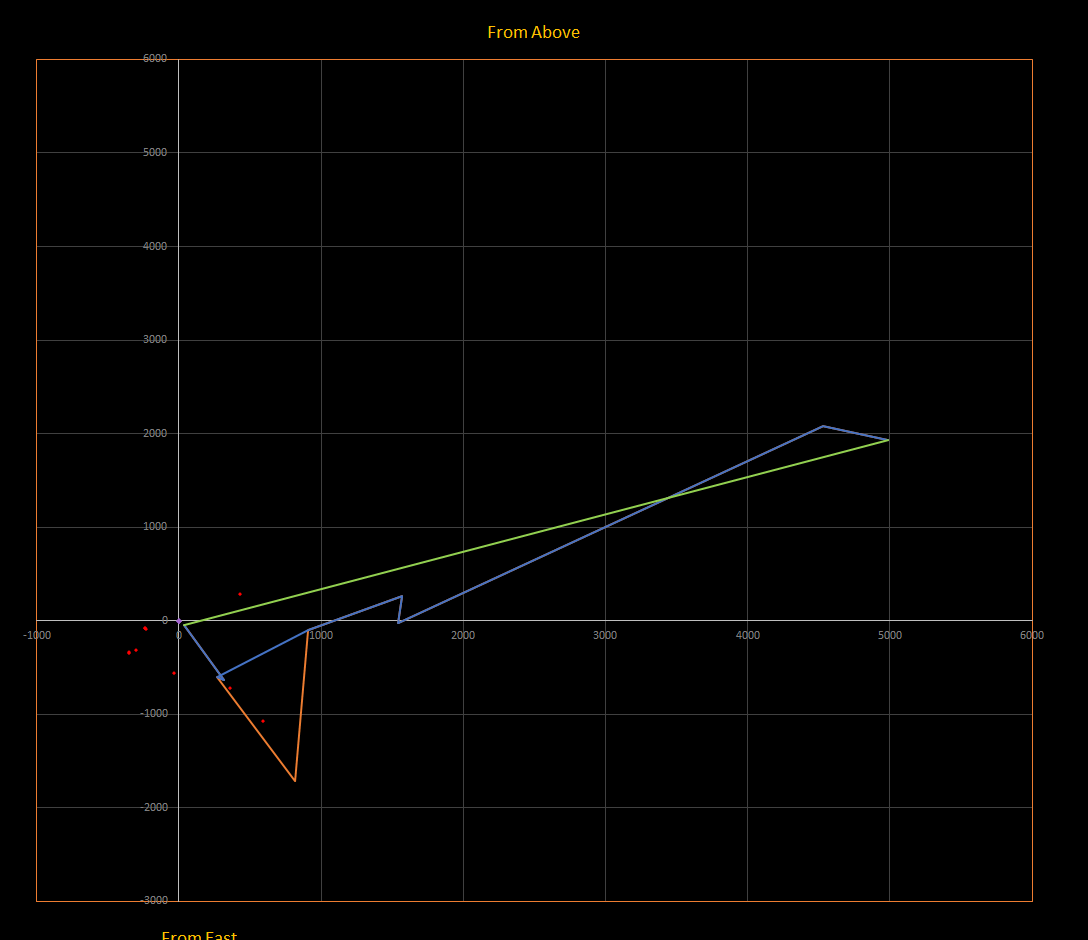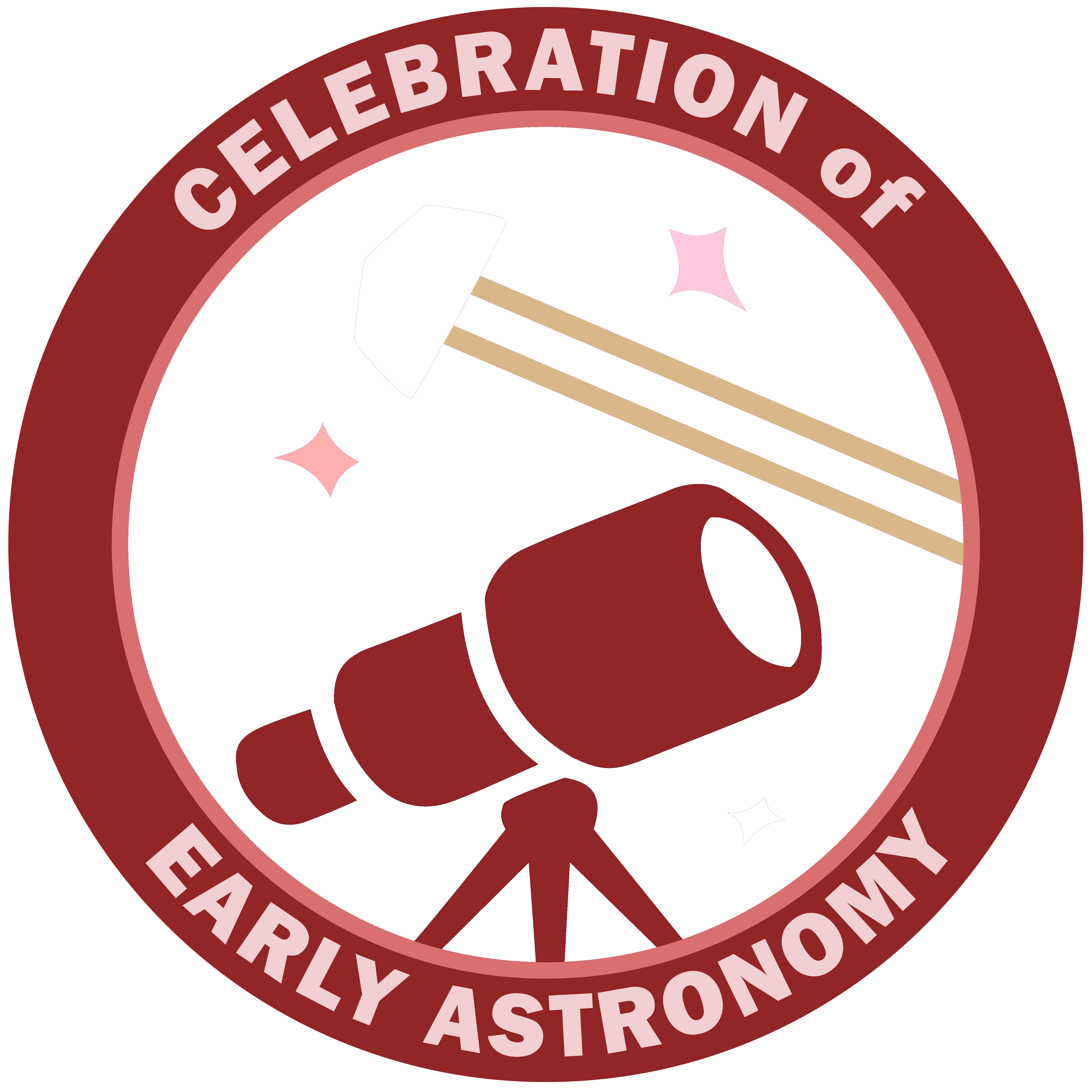On January 7, 2024 we will be launching the sixth iteration of the Celebration of Early Astronomy expedition. For Leg 1 we will be working our way eastward to the NGC 3590 cluster as we visit sights such as Orion’s Belt, and The Vela Pulsar along the way, as well as some clusters and other stars of interest.
Dates
Start Date: January 7, 2024
End Date: January 14, 2024
Distances
Basecamp Line: 5,333 Ly
Main Waypoints: 6,923 Ly
Optional Waypoints: 6,923 Ly
Map, (click for full size):

Basecamp: NGC 3590 CLA 15
Main Waypoints
- Map References quick reference list, more details below
- Keltim
- Alnitak
- Mintaka
- Vela Pulsar
- Phi Velorum
- HD 78344
- GCRV 715
- NGC 3590 CLA 15
Main Waypoints Details
- Map Reference: Keltim
- POI: GL 149
- We will launch our sixth Celebration of Early Astronomy Expedition from this location, while in-game it is named Keltim, it is the real binary star system known as GJ 149, containing the stars
- SIMBAD Link
- EDSM Link
- Map Reference: Alnitak
- POI: Orion’s Belt
- The easternmost star of Orion’s Belt, a very recognizable landmark in the night sky. It is a known triple-star system. Its distance from our solar system in-game is actually a lot closer than in reality, as when the in-game galaxy was generated it was thought to be at a distance of about 225 parsecs from us, however observations since then have revealed that it is actually much further at approximately 1260 parsecs. (about 4100 lightyears). Alnitak Aa is an O class supergiant, estimated to be roughly 33 times as massive as our sun, 20 times the diameter, and 21,000 times the brightness. It is the brightest class O star in the night sky. – Alnitak Ab is a B type subgiant discovered in 1998, and Alnitak C is believed to be part of the system, but has not been fully confirmed and may be another star along the line of sight from our solar system to Alnitak.
- There is a POI there named “Impressive Rings” on one of the other stars in the system.
- SIMBAD Link
- EDSM Link
- Map Reference: Mintaka
- POI: Orion’s Belt
- The westernmost star of Orion’s Belt, a very recognizable landmark in the night sky. Mintaka is a multi star system approximately 1200 lightyear from our own solar system, however in game it is only 692 lightyears from Sol. This is due to new discoveries that occurred since the generation of the in-game galaxy show it being nearly twice as far as it was believed to be in 2013. – The primary stars of the system are a class O and a class B star that orbit each other. They are aligned such that they eclipse each other periodically as viewed from our solar system, causing periodic decreases in the brightness of the system in the night sky.
- SIMBAD Link
- EDSM Link
- Map Reference: Vela Pulsar
- The Vela Puslar is a nearby pulsar and one of the best known “gltiching” pulsar, in that it will have unpredicatble changes in its rotational speed for a few seconds at a time. Currently the most recent known glitch of the Vela Puslar was on July 22, 2021 where it briefly slowed down it’s rotational speed for a few seconds before returning to it’s normal rotational speed.
- SIMBAD Link
- EDSM Link
- Map Reference: Phi Velorum
- Phi Velorum is a B class supergiant in the Vela constellation. It is additionally known by the identifiers HD 86440 and HR 3940, and has the traditional Chinese name of Tseen Ke (天紀 ). It is approximately 10 times as massive as our sun.
- SIMBAD Link
- EDSM Link
- Map Reference: HD 78344
- This system contains the rather rare sight of a ringed neutron star. The main star of the system is an O class main sequence star. Additionally there is a fair number of other real star systems near this one for exploration.
- SIMBAD Link
- EDSM Link
- Map Reference: GCRV 715
- POI: The Southerner Nebula
- NGC 3918, also known as The Southerner Nebula or “The Blue Planetary Nebula” is a bright planetary nebula in the Centaurus constellation region of the sky. It was first discovered by Sir John Herschel in March 1834 and is easily visible through small telescopes. The central star of the nebula is actually obscured from optical light observations because of how bright the planetary nebula around it is.
- SIMBAD Link
- EDSM Link
- Map Reference: NGC 3590 CLA 15
- POI: NGC 3590
- NGC 3590 is an open cluster in the Carina constellation of the sky. There are a fair number of real stars located around this region for exploration purposes. We will be having our CEA 6 Leg 1 Basecamp at NGC 3590 CLA 15 in this cluster.
- SIMBAD Link
- EDSM Link
Optional Waypoints
- Map References quick reference list, more details below
- Keltim
- Alnitak
- Mintaka
- Epsilon Orionis
- Vela Pulsar
- Phi Velorum
- HD 78344
- GCRV 715
- NGC 3590 CLA 15
Optional Waypoints Details
- Map Reference: Epsilon Orionis
- AKA: Alnilam
- More commonly known as Alnilam, this is the center star of the Orion’s Belt asterism. It is a decent bit further (in-game) from our solar system than the other two stars of Orion’s Belt (Alnitak and Mintaka). It is the 29th brightest star in the night sky and the fourth brightest star in the Orion constellation.
- SIMBAD Link
- EDSM Link
